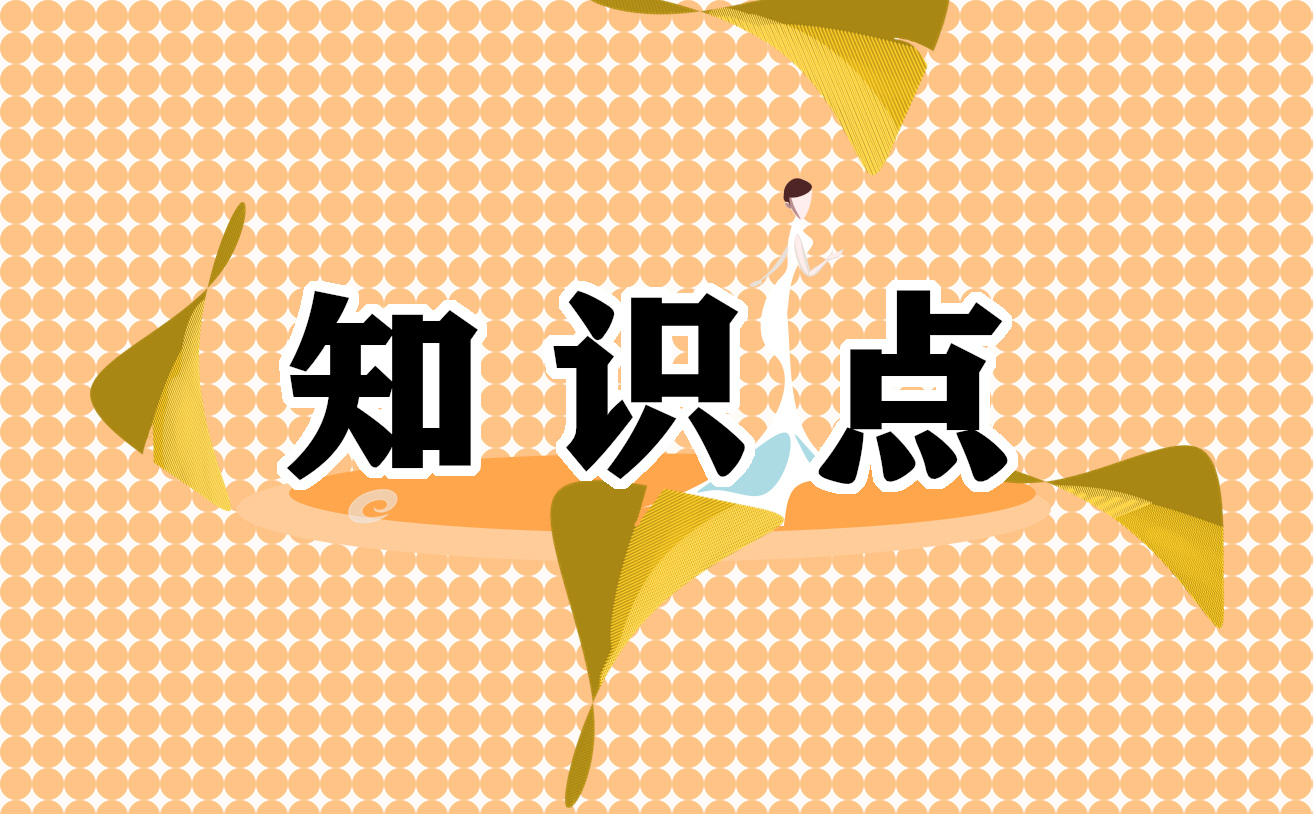你知道高考的重點語法是什么嗎?英語語法是通過對英語語言的研究,系統總結出的一系列語言規則。下面是小編為大家整理的有關高一英語語法知識點總結,希望對你們有幫助!

高一英語語法知識點總結(一)
1. 定義:用作表語的從句叫做表語從句。
2. 構成:關聯詞+簡單句
3. 引導表語從句的關聯詞的種類:
(1) 從屬連詞that。
例如:The trouble is that I have lost his address. 麻煩是我把他的地址丟了。
(2) 從屬連詞whether, as, as if。
例如:He looked just as he had looked ten years before. 他看起來還與十年前一樣。
The question is whether they will be able to help us. 問題是他們是否能幫我們。
注:從屬連詞if一般不用來引導表語從句,但as if卻可引導表語從句,
例如:All this was over twenty years ago, but it's as if it was only yesterday. 這都是20多年前的事了,但宛如昨天一樣。
能跟表語從句的謂語動詞一般為系動詞be, seem, look等。
例如: It looked as if it was going to rain. 看起來天要下雨了。
(3)連接代詞:
Who whom whose what
Which whoever whatever whichever
連接副詞:
Where when how why
例如:The problem is who we can get to replace her. 問題是我們能找到誰去替換她呢。
The question is how he did it. 問題是他是如何做此事的。
That was what she did this morning on reaching the attic. 那就是她今晨上了閣樓干的。
注:
1. 連詞because可引導表語從句。
例如: I think it is because you are doing too much. 我想這是因為你做得太多。
2. 在一些表示“建議、勸說、命令”的名詞后面的表語從句中,謂語動詞用虛擬語氣。should+動詞原形表示,should可省略。
例如: My suggestion is that we (should) start early tomorrow. 我的建議是我們明天一早就出發。
高一英語語法知識點總結(二)
如何變時態:
直接引語在改為間接引語時、時態需要做相應的調整。
現在時它需改為過去時態;過去時態改為完成時;過去完成時則保留原來的時態。如:
1)She said. "I have lost a pen."→She said she had lost a pen
2)She said. "We hope so."→She said they hoped so.
3) She said. "He will go to see his friend。"→She said he would go to see his friend。
但要注意在以下幾種情況下。在直接引語變為間接引語時,時態一般不變化。
①直接引語是客觀真理。
"The earth moves around the sun and the moon moves around the earth, the teacher told me. → The teacher told me the earth moves around the sun and the moon moves around the earth。
②直接引語是過去進行時,時態不變。如:
Jack said. "John, where were you going when I met you in the street?"→Jack asked John where he was going when he met him in the street。
③直接引語中有具體的過去某年、某月、某日作狀語,變為間接引語時,時態不變。如:
Xiao Wang said. "I was born on April 2l, 1980。" →Xiao Wang said he was born on April 20, 1980。
④直接引語如果是一般現在時。表示一種反復出現或習慣性的動作,變間接引語,時態不變。如:
He said, "I get up at six every morning。" →He said he gets up at six every morning。
⑤如果直接引語中的情態動詞沒有過去時的形式(例:ought to, had better, used to)和已經是過去時的形式時,(例:could, should, would, might)不再變。如:
Peter said. "You had better come have today。" →Peter said I had better go there that day。
高一英語語法知識點總結(三)
不定冠詞 不定冠詞a,an與one同源,表示微弱的的概念,但并不強調數目,用來表示不確定的人或事物。
A用在輔音前,而不是輔音字母前;an用在元音前,而不是元音字母前。
a university in Asia
1.表示同類中的―任何一個‖ A cat has nine lives.
2.表示泛指的某人、某物 I know a John Lennon,but not the famous one.
3.表示數量的―一‖ He has a daughter.
4. 表示單位數量的‖每一‖ I earn 10 dollars an hour.
5.表示相同的‖ The two birds are of a color.
6. 用于集體名詞前 He grows up in a large family.
7. 在某種情況下可用于抽象名詞和物質名詞前 China has a long history.
二、定冠詞的用法
1.表示特定的人或物
2.表示地球、宇宙中獨一無二的事物 主要指各種天體及世界上比較有影響的物體。
The sun,the moon,the earth 3.表示地點、方向、時間、方式等 at the corner 在拐角處 1) 在表示季節的名詞前常不用冠詞。 In spring 在春天 2) 具體某年的某個季節,需用冠詞。
In the summer of the year2008 3)用于序數詞或形容詞的最高級前 the first the second 4)用于形容詞前使其名詞化 the rich the poor 5)用于復數姓氏前,表示―夫婦‖或全家 The Smiths 6)用于樂器名詞前 Play the piano
高一英語語法知識點總結必看相關文章:
★ 最全高一英語語法知識點總結
★ 高一英語語法知識點歸納五篇
★ 高一英語語法整理總結5篇
★ 高一英語語法歸納總結5篇
★ 2020高一英語必背語法知識點總結5篇
★ 人教版高一英語語法知識點總結
★ 高一英語語法總結歸納五篇
★ 精選最全高一英語知識點總結歸納5篇
★ 高一英語語法知識點精選五篇
★ 精選5篇高一英語知識點總結歸納
上一篇:歷年高考英語易錯知識點大匯總





